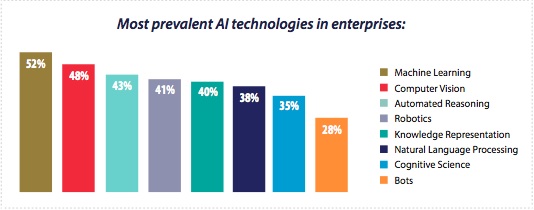Performance management of enterprise applications is key to achieving business objectives and maximizing returns on IT investments. But with increasing system complexity, rapidly evolving platforms, shorter time to market and inadequate quantitative models and tools, performance management often represents one of the most challenging aspects for enterprise IT.
The hype around artificial intelligence (AI) is beginning to settle, and companies are beginning to see measurable change from early investments in the technology. This initial success, however nascent, is silencing some of the doubt that AI would be able to deliver on its promise.
The deluge of data created by IT infrastructures that generate data every second often takes great investments of time to make sense of. Leveraging AI or machine learning technologies in Application Performance Management (APM) simplifies the complex IT systems, automates application-environment discovery and makes for smarter decisions faster with proactive problem resolution. The benefits of AI-driven APM solutions seem obvious but raise important questions around AI technologies and its greater impact.
To better understand the state of AI among enterprises across industries, Infosys commissioned a survey of more than 1,000 global C-level executives and IT decision makers (ITDMs). The survey focused on the impact AI deployments are having on organizations and reveals the return on investment (ROI) of current AI deployments, as well as its impact on leadership and the workforce.
The research, Leadership in the Age of AI Report, makes clear that AI technologies are no longer experimental, rather they are already broadly deployed, producing real results and impacting business strategy, IT investments, and the workforce.
AI Beyond Automation
The research found that 86 percent of organizations surveyed have middle or late-stage AI deployments and view AI as a major facilitator of future business operations.
Nine out of 10 C-level executives reported measurable benefits from AI within their organizations.
AI is dependent upon data quality and accessibility, making APM a critical underpinning to success of AI initiatives. AI is not a standalone application but part of a knowledge management ecosystem that involves layers of business and IT data. Machine learning, computer vision, and automated reasoning and other technologies may be part of that ecosystem.

The survey found the top strategic advantages organizations report from their AI deployments are improved process performance (45 percent), productivity gains due to IT time spent on higher-value work (40 percent) or related to fewer staff needed to accomplish analogous workloads (38 percent), improved compliance, security and risk management (38 percent).
But the positive effects of AI within organizations go beyond driving efficiencies, as three-fourths of C-level executives said they expect AI to impact their organization's offerings even more than they would impact organizational processes.
The research also showed that the majority of organizations start off using AI to automate or improve routine or inefficient processes with 66 percent of organizations primarily leveraging AI for business process automation.
When looking at companies with later stage AI deployments, 80 percent of IT decision makers (ITDMs) reported they are using AI to augment existing solutions or build new business-critical solutions and services to optimize insights and the consumer experience. Here, APM can play a significant role in how these insights are derived.
Challenges in the Age of AI
AI may end up being a boon to APM solutions — but that's not to say there won't be challenges to address in the new age of AI. Companies need to ensure that their most important investment, their people, are prepared for a future fueled by automation and are equipped with the necessary skills for the new roles AI will create. Additionally, companies need to provide the necessary resources and time to support the learning curve that comes with these technologies.
IT has been the primary focus of AI initiatives, and will continue to be for the foreseeable future. The survey found 61 percent of respondents agreed that IT will be the most impacted job function over the next five years. As IT departments continue to implement AI-based tools, they will become imperative for modern IT operations.
Similar to APM solutions, data largely underpins the successful use of AI. Another challenge important to note as the age of AI takes hold is 49 percent of respondents reported that their organization is unable to deploy the AI technologies they want because their data is not ready to support them. As such, 77 percent of ITDMs reported they plan to invest in data management.
Artificial Intelligence is rapidly being adopted by companies across industries and most would agree that it holds the potential to unlock benefits currently untapped by existing IT. So far, the arc of AI leans toward empowerment and giving IT and business organizations the tools necessary to automate redundant tasks, detect and analyze hidden patterns in data and generally make possible revolutionary insights that will help achieve objectives.
